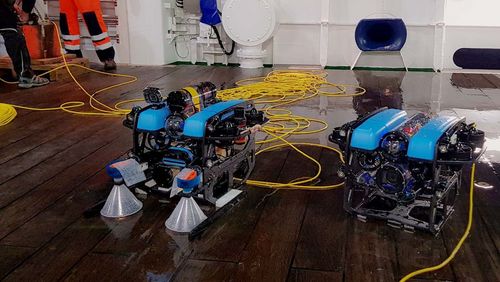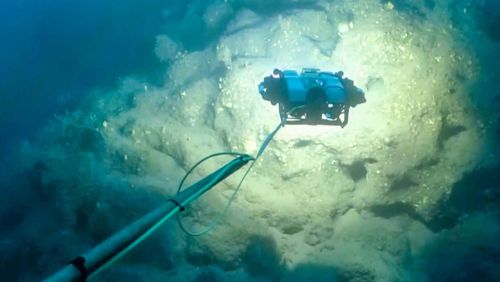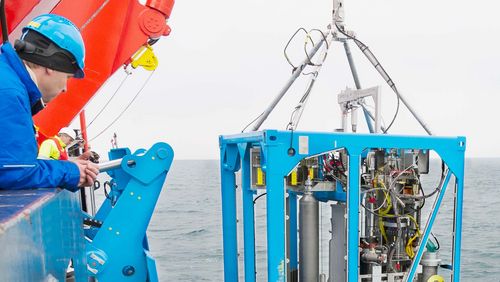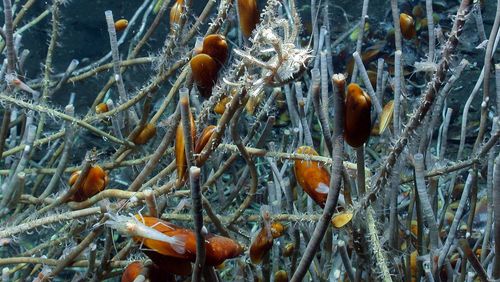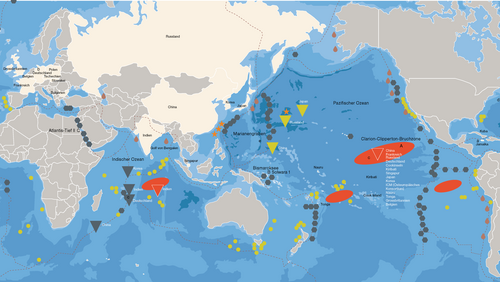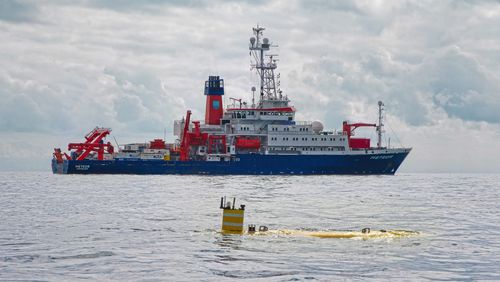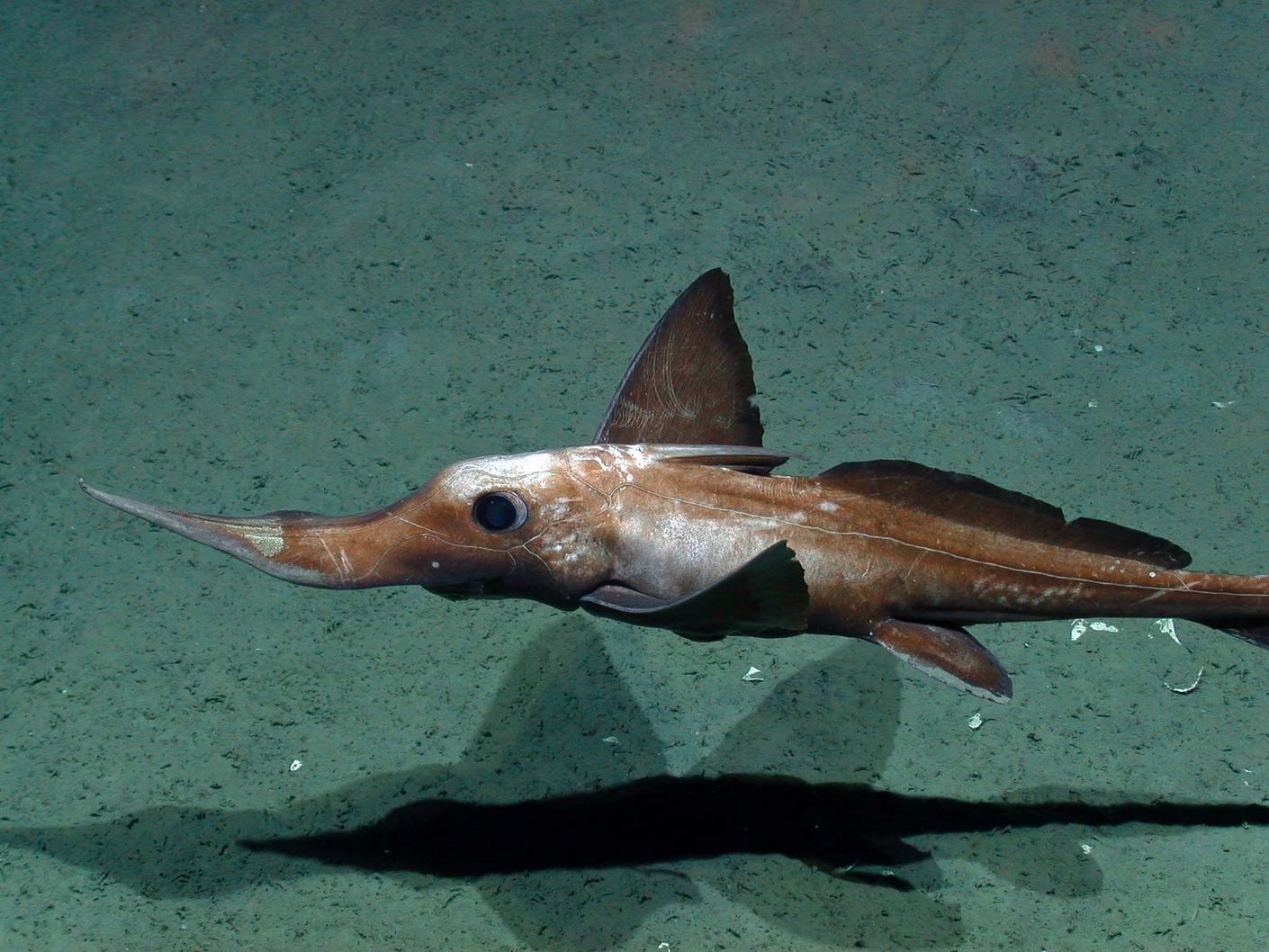
An unusual sort of life
In the deep sea, there are life forms that defy the imagination. Their function in the overall ecosystem of our planet is largely unexplored, but their crucial role is clear.
In the middle of the Atlantic Ocean, pure hydrogen escapes—a fact that prompted an international team of marine scientists to ask whether life there is inherently possible. Equipped with hydrogen detectors, they set out to answer the question—and found mussels with gut bacteria that oxidise hydrogen. The bacteria respire hydrogen instead of oxygen! For Michael Schulz, director of MARUM – Center for Marine Environmental Sciences, this is a prime example of how underwater vehicles can be used to test a theory in actual practice. And to come upon completely new conclusions and unknown organisms. “This is what you learn in the deep sea: there are many possible communities of organisms and, in some cases, they have fundamentally different ways of functioning. For instance by using chemosynthesis.” These organisms survive by oxidising inorganic matter from the Earth’s interior, including methane, hydrogen sulphide or hydrogen.
Life under pressure
The deep sea destabilises our understanding of what constitutes life. For every 10 metres of depth, the water pressure increases by about one atmosphere, one atmosphere being the air pressure at sea level. At an ocean depth of 1000 metres, a weight of 100 kilogrammes presses upon every single square centimetre. Roughly a quarter of the entire seabed lies even lower than 5000 metres. No sunlight penetrates the deep sea. And not only is it pitch-dark—it is cold. Despite the enormous hydropressure, the darkness and cold, life forms thrive in the deep sea, even at its greatest depths. Whales dive to depths of 3000 metres, and fish go even deeper, down to 8000 metres—for the food.
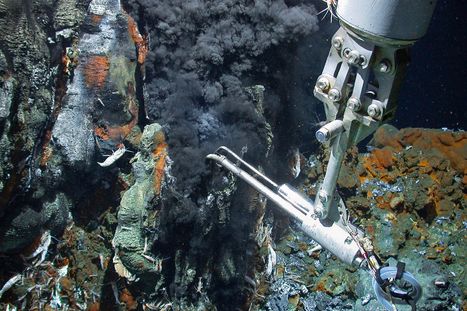
Some like it hot
Most of the permanent dwellers in the abyssal deep sea are molluscs and microorganisms. The habitats of these creatures are frequently near the so-called black smokers and white smokers—chimney-like structures, located in volcanically active areas of the seabed, that spout plumes of hot water. In this extreme environment, shrimp, slugs and crustaceans live in an intricate symbiosis with bacteria. The bacteria convert the hydrogen sulphides dissolved in the water into energy, and they are ingested by other life forms. Over 500 species occur exclusively near the black smokers; these species are considered particularly vulnerable. The life forms in the seabed itself are even more extreme: for every kilometre of depth, the temperature rises 25 to 30 degrees Celsius. Despite the extremely hostile climate, microorganisms were found in the seabed at a depth of two kilometres off the coast of Japan, where they settled with other terrestrial plant remains 20 million years ago. Today they thrive in the carboniferous sediment that reaches temperatures of up to 60 degrees Celsius. What do these organisms feed on? And what environmental conditions would cause their extinction? No one knows.
Crucial bacteria and archaebacteria
What we do know, however, is that there is a close connectivity between microbial organisms (bacteria, archaebacteria) in this abyssal biosphere and on land (the geosphere). This interrelationship influences the material balance in both seabed and deep sea and thus possibly plays a role not only in the ecosystems of these habitats but in entire food webs, from plankton to fish. Bacteria and archaebacteria in the deep sea are also crucial agents in the global carbon cycle: the micro-organisms living in the sediment of the world’s oceans feed on the waste of organic substances—which the deep sea has in great supply. Indeed, the deep-sea sediment is the Earth’s largest carbon reservoir.
Irreversible damage
The ecosystem of the deep sea is as vulnerable as it is vital. To illustrate this point, MARUM director Michael Schulz relates an experiment conducted in 1989 by German deep-sea researchers in the Pacific, off the coast of Peru. The researchers ploughed the seabed in order to observe how the environment would react to the upheaval. The results: even 26 years later, the microbial life forms still had not recovered completely and the furrows in the seabed were still visible. “Everything happens very, very slowly down in the depths,” says Michael Schulz. “The organisms have fewer progeny, life happens in slow motion—adapted to the cold, the dark and the immense pressure.” Which explains why the ecosystem in the deep sea is unable to regenerate quickly and easily. “It is of utmost importance that the same massive disruption caused by mining on land doesn’t happen in the sea,” Schulz stresses.
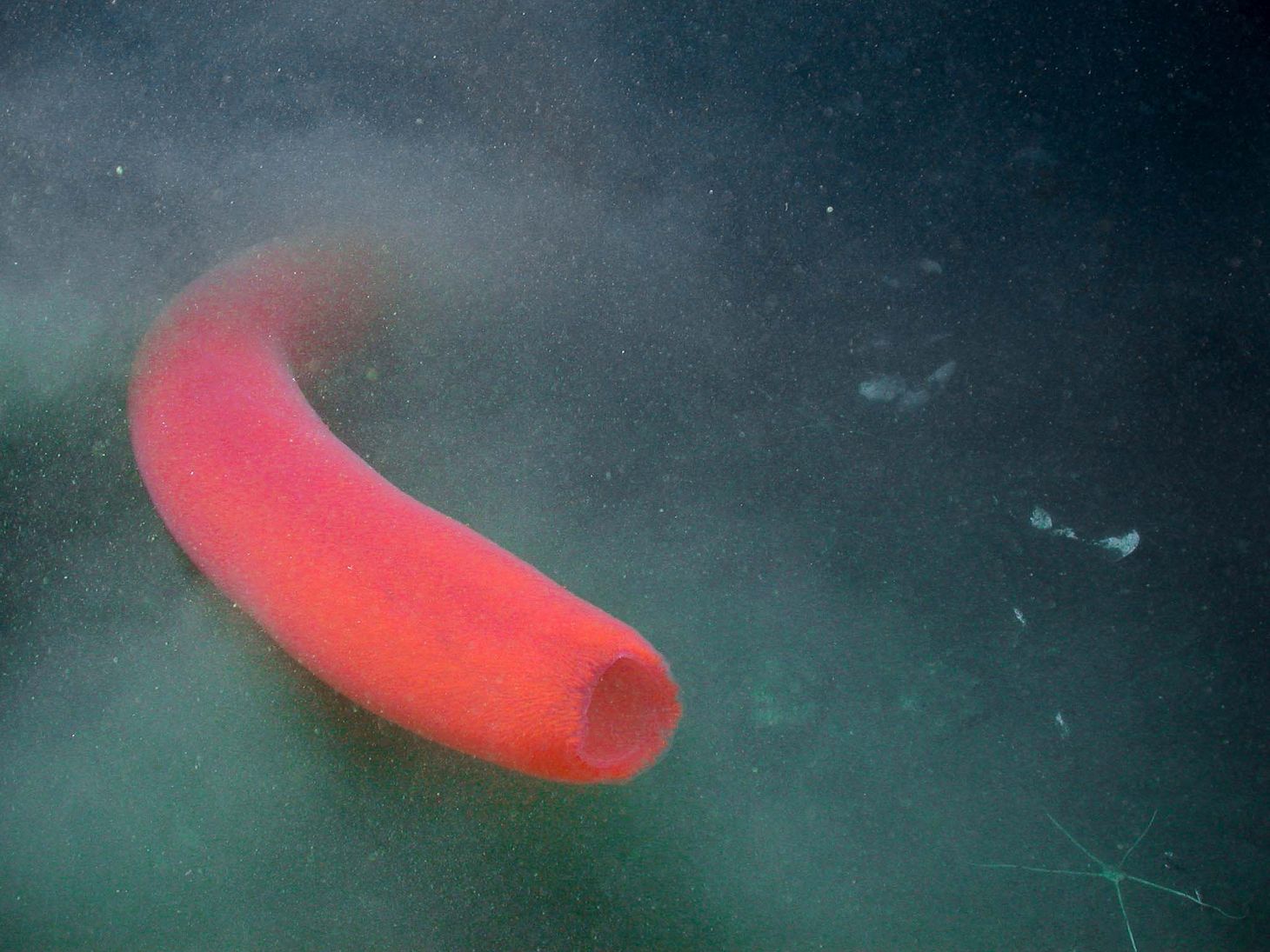
Creature comforts
A few areas in the deep sea are already known for being popular with life forms: the slopes of underwater mountains (known as seamounts), black smokers and white smokers, and polymetallic nodules. The Census of Marine Life conducted by a global network of researchers registered 240 000 species in the Clarion-Clipperton Fracture Zone, which is 7000 kilometres in length. The researchers estimate, however, that actual numbers are much higher and that there are at least a million different species. Anemones, crustaceans, mussels, crabs, eels, blobfish, deep-sea fleas, squid, octopuses, gorgonians (sea fans), brittle stars, sea lilies, sea cucumbers, pandalid shrimp, bluemouth rockfish, beard worms, sponges, deep sea cold-water corals and slugs populate the deep sea ... as do presumably hundreds of thousands of other species that are still undiscovered. The rich food supply also attracts whales and large fish such as sharks and tuna down to the abyssal regions of the sea.
Deep-sea mining impacts
Deep-sea mining will negatively impact biodiversity in the deep sea, both directly and indirectly. Directly, because it destroys communities of organisms that have evolved over millions of years. A multitude of diverse, rare and unique species coexists in the deep sea, and each species is often made up of only a few individuals that are not highly mobile and that reproduce only at a very slow rate. If their habitat is destroyed, they cannot simply “emigrate” to a new location, as their reproductive abilities rely on a specific network of habitat conditions. Yet, these diverse species living in an intricate symbiosis are not “nice-to-haves”: they are vitally important to the health of our planet. Functioning ecosystems provide humans with clean water, food and resources—and they stabilise the climate. Indirectly, deep-sea mining will adversely impact biodiversity because leaching and stripping away the crust causes plumes of sediment to be emitted. These plumes cloud the water and spread great distances, endangering the sponges, corals and invertebrates that need clear water and an environment with very few organic particles to survive; in the worst case, these complex organisms that filter water would suffocate on the particles. In addition, excavation releases heavy metals into the sea. When dissolved in water, copper, zinc, manganese, cobalt and nickel in high concentrations are toxic. The contamination with heavy metals is one of the greatest environmental risks of extracting minerals from the seabed. The contaminated water first poisons fishes; heavy metals then accumulate across the entire food chain and, ultimately, land on our dinner plates.
Environmental protection in the deep sea
Which ecosystems in the deep sea are essential? What areas must be protected from the impacts of deep-sea mining at all costs? The Innovation Center for Deep-Sea Environ-mental Monitoring plans to answer these questions. The centre, which was established in 2018 at MARUM at the University of Bremen with funding from the Werner Siemens Foundation, aims to contribute to better understanding the most important parameters of the deep sea, to explore and to identify the most important ecosystems. This knowledge will then lay the foundation for environmental protection regulations in deep-sea mining. “We want to find out what measures must be taken in order to ensure that the damage caused by deep-sea mining will at least be kept to a minimum,” says MARUM director Michael Schulz. Nevertheless, the marine researcher is convinced that damage will be done. “Sometimes the term ‘green deep-sea excavation’ is bandied about. But that’s utter nonsense—there is no such thing,” says Schulz. “There will be negative impacts on an ecosystem that we haven’t even begun to understand.”
Text: Brigitt Blöchlinger
Photos: MARUM, Center for Marine Environmental Sciences at the University of Bremen




